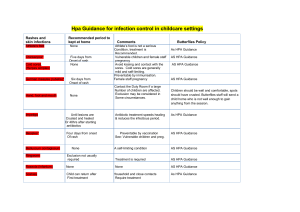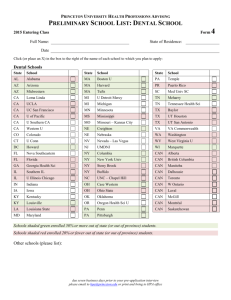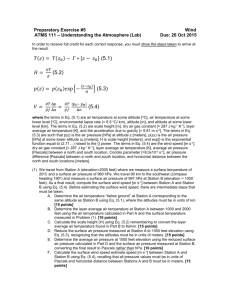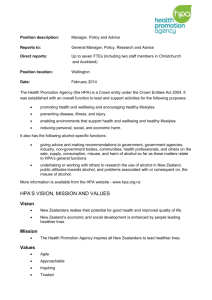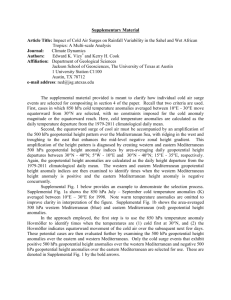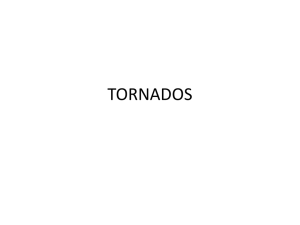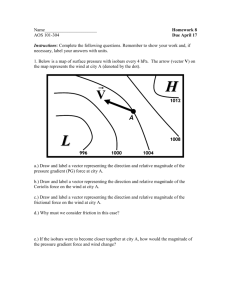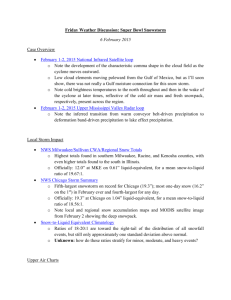Project#6
advertisement
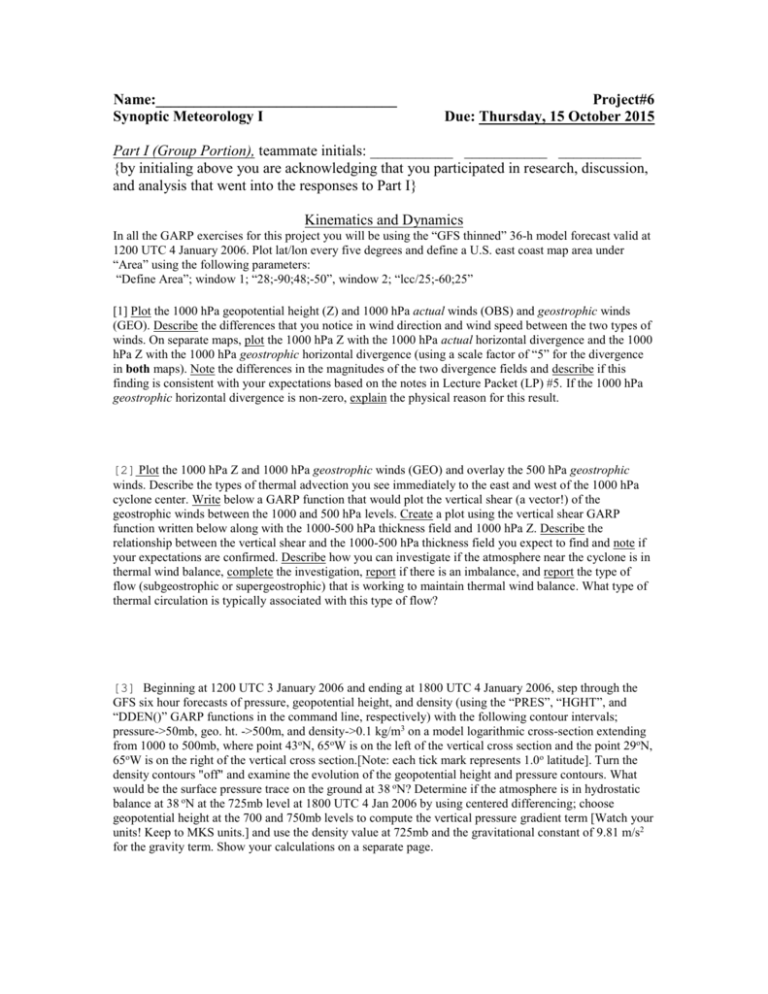
Name:________________________________
Synoptic Meteorology I
Project#6
Due: Thursday, 15 October 2015
Part I (Group Portion), teammate initials: ___________ ___________ ___________
{by initialing above you are acknowledging that you participated in research, discussion,
and analysis that went into the responses to Part I}
Kinematics and Dynamics
In all the GARP exercises for this project you will be using the “GFS thinned” 36-h model forecast valid at
1200 UTC 4 January 2006. Plot lat/lon every five degrees and define a U.S. east coast map area under
“Area” using the following parameters:
“Define Area”; window 1; “28;-90;48;-50”, window 2; “lcc/25;-60;25”
[1] Plot the 1000 hPa geopotential height (Z) and 1000 hPa actual winds (OBS) and geostrophic winds
(GEO). Describe the differences that you notice in wind direction and wind speed between the two types of
winds. On separate maps, plot the 1000 hPa Z with the 1000 hPa actual horizontal divergence and the 1000
hPa Z with the 1000 hPa geostrophic horizontal divergence (using a scale factor of “5” for the divergence
in both maps). Note the differences in the magnitudes of the two divergence fields and describe if this
finding is consistent with your expectations based on the notes in Lecture Packet (LP) #5. If the 1000 hPa
geostrophic horizontal divergence is non-zero, explain the physical reason for this result.
[2] Plot the 1000 hPa Z and 1000 hPa geostrophic winds (GEO) and overlay the 500 hPa geostrophic
winds. Describe the types of thermal advection you see immediately to the east and west of the 1000 hPa
cyclone center. Write below a GARP function that would plot the vertical shear (a vector!) of the
geostrophic winds between the 1000 and 500 hPa levels. Create a plot using the vertical shear GARP
function written below along with the 1000-500 hPa thickness field and 1000 hPa Z. Describe the
relationship between the vertical shear and the 1000-500 hPa thickness field you expect to find and note if
your expectations are confirmed. Describe how you can investigate if the atmosphere near the cyclone is in
thermal wind balance, complete the investigation, report if there is an imbalance, and report the type of
flow (subgeostrophic or supergeostrophic) that is working to maintain thermal wind balance. What type of
thermal circulation is typically associated with this type of flow?
[3] Beginning at 1200 UTC 3 January 2006 and ending at 1800 UTC 4 January 2006, step through the
GFS six hour forecasts of pressure, geopotential height, and density (using the “PRES”, “HGHT”, and
“DDEN()” GARP functions in the command line, respectively) with the following contour intervals;
pressure->50mb, geo. ht. ->500m, and density->0.1 kg/m3 on a model logarithmic cross-section extending
from 1000 to 500mb, where point 43oN, 65oW is on the left of the vertical cross section and the point 29oN,
65oW is on the right of the vertical cross section.[Note: each tick mark represents 1.0o latitude]. Turn the
density contours "off" and examine the evolution of the geopotential height and pressure contours. What
would be the surface pressure trace on the ground at 38 oN? Determine if the atmosphere is in hydrostatic
balance at 38 oN at the 725mb level at 1800 UTC 4 Jan 2006 by using centered differencing; choose
geopotential height at the 700 and 750mb levels to compute the vertical pressure gradient term [Watch your
units! Keep to MKS units.] and use the density value at 725mb and the gravitational constant of 9.81 m/s2
for the gravity term. Show your calculations on a separate page.
Name:________________________________
Synoptic Meteorology I
Project#6
Due: Thursday, 15 October 2015
Part I (Group Portion, continued):
[4] Plot the 200 hPa geopotential height and streamlines parallel to the 200 hPa wind valid at 1200 UTC 4
January 2006 over the area “Define Area”; window 1; “-20;0;20;359”, window 2; “MER” and note below
the general relationship between the isoheight contours and streamlines at 45o. For which latitude band (e.g.
tropics, subtropics, mid-lats, polar regions) does this relationship clearly “break down”? Given the flow
parameters “ψ” and “χ” discussed in LP#5, which parameter most closely corresponds to geopotential
height (Z)?
Part II (Individual Portion):
A parcel is located initially on the 300 K isentropic surface that is also the vertical position of the 500 mb
isobaric level at Station y1. Horizontal divergence is occurring near the surface at Station y1 only. Vertical
motion is zero at the surface at Station y1. A constant horizontal wind blows between Stations y1 and y2 in
the 1000-500 mb layer (surface pressure is everywhere equal to 1000 mb) directed from y 1 toward y2 with a
magnitude of 10 m s-1. The parcel moves vertically as it drifts horizontally with the background flow.
Determine the critical value of surface divergence at Station y1 that makes the difference between the air
parcel having a stable or an unstable trajectory by the time it reaches Station y2. Determine the type of
parcel trajectory (stable or unstable) if the observed horizontal divergence at the surface at Station y 1
exceeds your critical value. Assume that the slopes of the environmental isentropic surfaces are constant
such that their pressure levels change 2 mb for every 5 km horizontal distance traversed. Assume that the
horizontal distance between Stations y1 and y2 is 500 km. In order to receive full credit on this problem,
you must provide the calculations used to derive the final answer/result.

